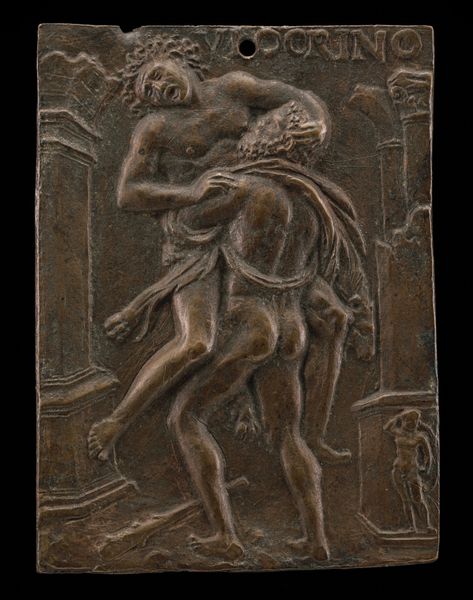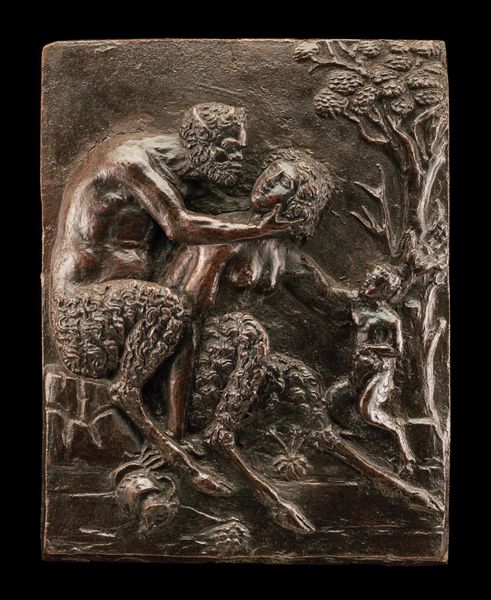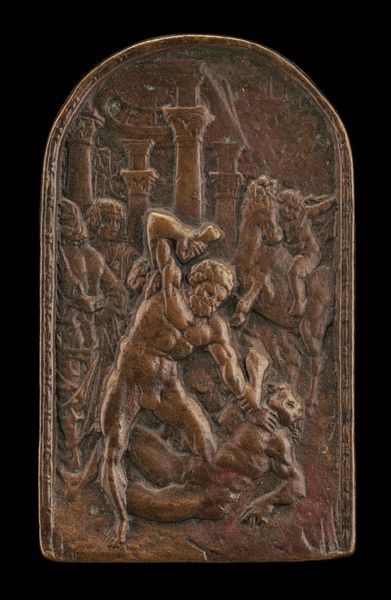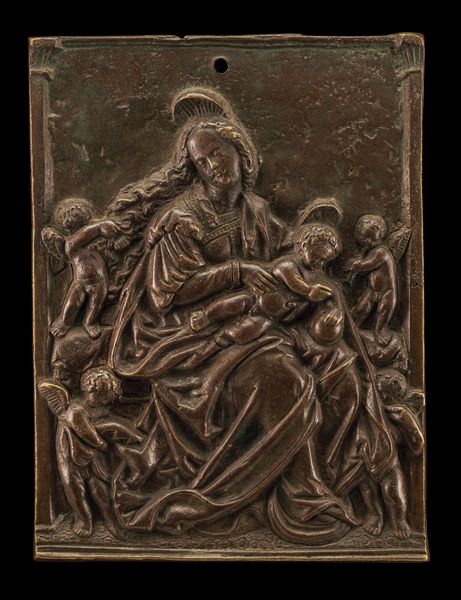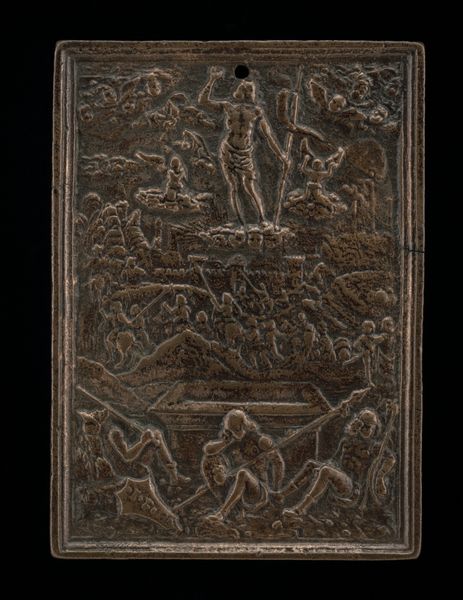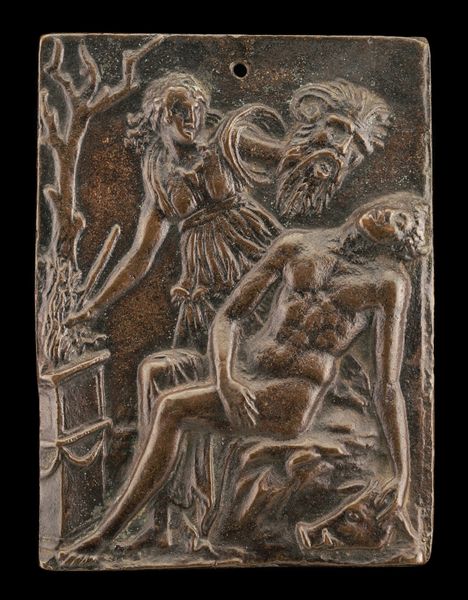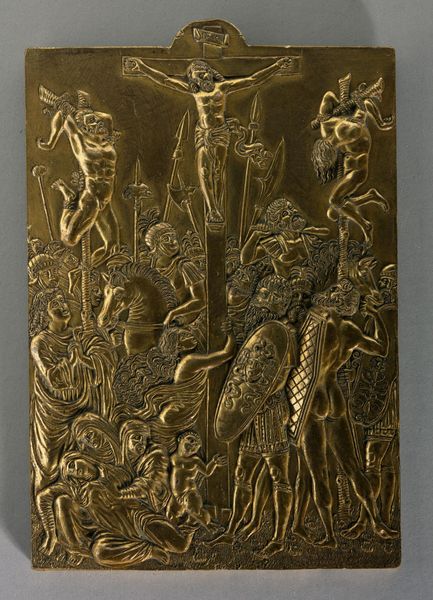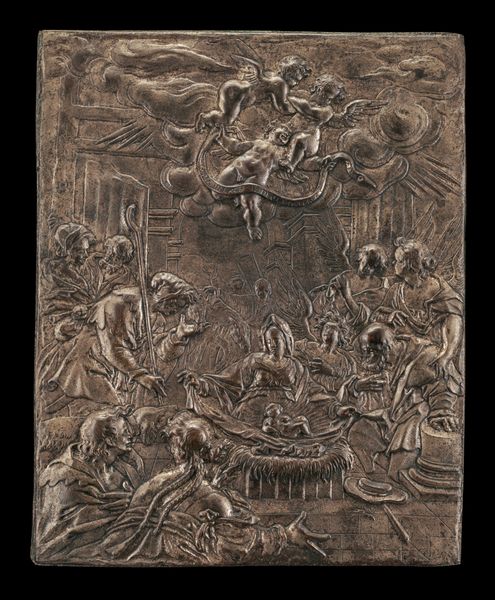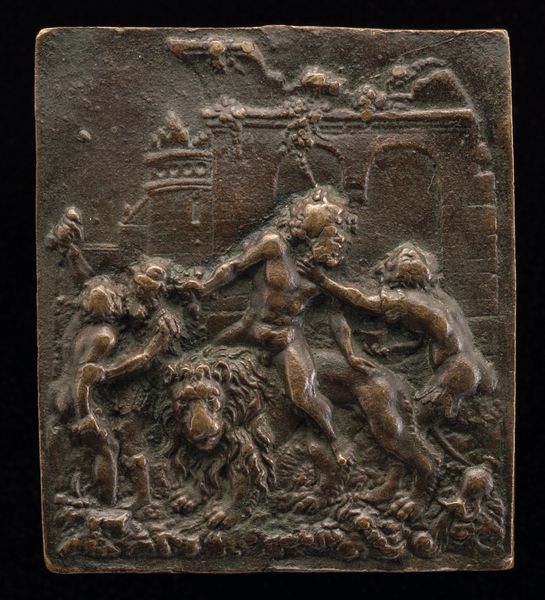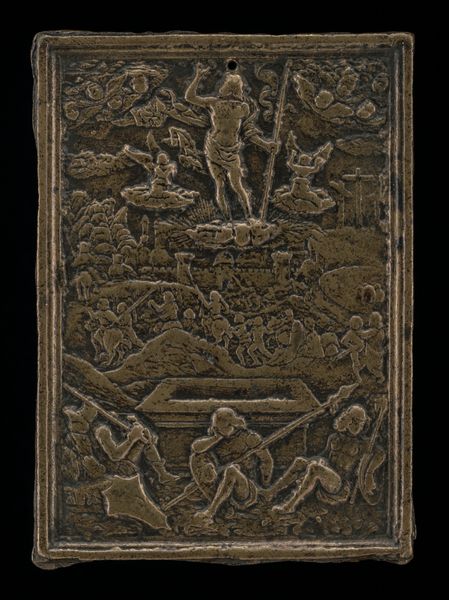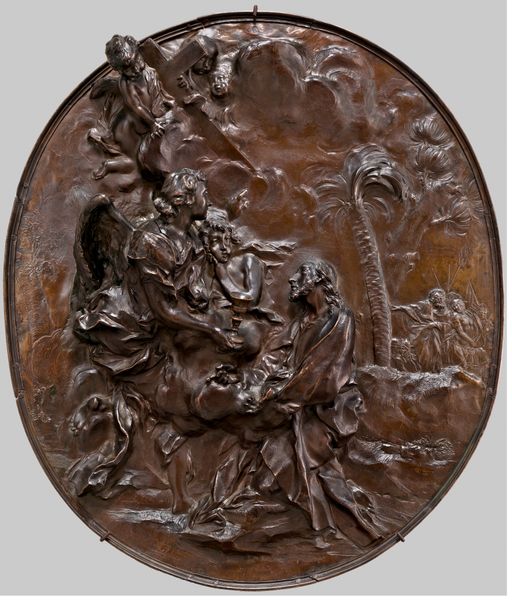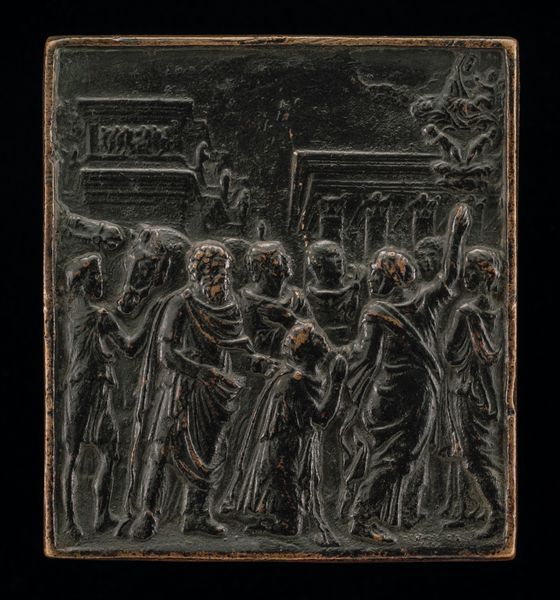
relief, bronze, sculpture
#
stone
#
sculpture
#
relief
#
landscape
#
bronze
#
figuration
#
sculpture
#
history-painting
#
italian-renaissance
Dimensions: overall: 54.95 × 37.3 cm (21 5/8 × 14 11/16 in.) gross weight: 14934.6 gr (32.925 lb.) framed: 106.68 × 76.2 × 15.24 cm (42 × 30 × 6 in.)
Copyright: National Gallery of Art: CC0 1.0
Editor: So this bronze relief is Francesco di Giorgio Martini’s “Saint Jerome,” from around 1477. It's striking how gaunt Saint Jerome looks; the bronze makes him seem even more weathered. How do you interpret this work, considering the historical context? Curator: Looking at “Saint Jerome” demands that we consider the potency of visual representation during the Italian Renaissance, especially around models of masculinity and religious devotion. How does the Saint's emaciated figure challenge conventional ideas of masculine strength and authority, and how might this challenge be perceived in a patriarchal society? Editor: That's interesting! It's not the idealised form we see in some Renaissance depictions. Curator: Exactly. Now, consider the landscape. What's the effect of juxtaposing a crumbling classical ruin with Saint Jerome's figure, seemingly ravaged by time and asceticism? Think about the classical knowledge rediscovered at that time and what its relationship was with Christian faith. Do you think it invites viewers to contemplate the changing relationship between humanity, faith, and the classical past during the early Renaissance? Editor: I see. It’s like he is at the threshold of a new era, but also clinging to the old, maybe struggling? Curator: Precisely! He's presented in a landscape littered with signs of the past. What message does this send about societal and spiritual change? Does it reinforce or question the period’s socio-political structures and biases regarding faith and the classical world? Editor: This makes me consider art as not just reflecting but also actively shaping societal discourse. Thanks, it's given me a lot to think about. Curator: It's by situating art within such critical narratives that we really start to understand its true power.
Comments
No comments
Be the first to comment and join the conversation on the ultimate creative platform.
